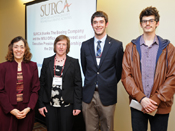Mormons discuss Book of Abraham translation

A nearly 3,000-word article posted recently on the website of the Church of Jesus Christ of Latter-day Saints (LDS) says the Book of Abraham is inspired scripture and probably not a literal translation from ancient Egyptian scrolls by Mormon founder Joseph Smith.
The essay marks a departure from past explanations by LDS officials and embraces the widely-held view from religious scholars and historians that Smith’s work isn’t a direct translation, said Armand Mauss, a retired professor of sociology and religious studies at WSU.
“It is an official recognition — even a concession — that Joseph Smith could not, and did not, ‘translate’ any scriptures in the literal, scholarly sense that is usually implied by the term ‘translate,'” Mauss said.
The article recognizes that it’s impossible to know how exactly Smith used the papyri to write the Book of Abraham. There were no eyewitnesses to the translation process, and only fragments of the scrolls exist today, the article says. It notes that Smith never claimed to know the language it was in.


